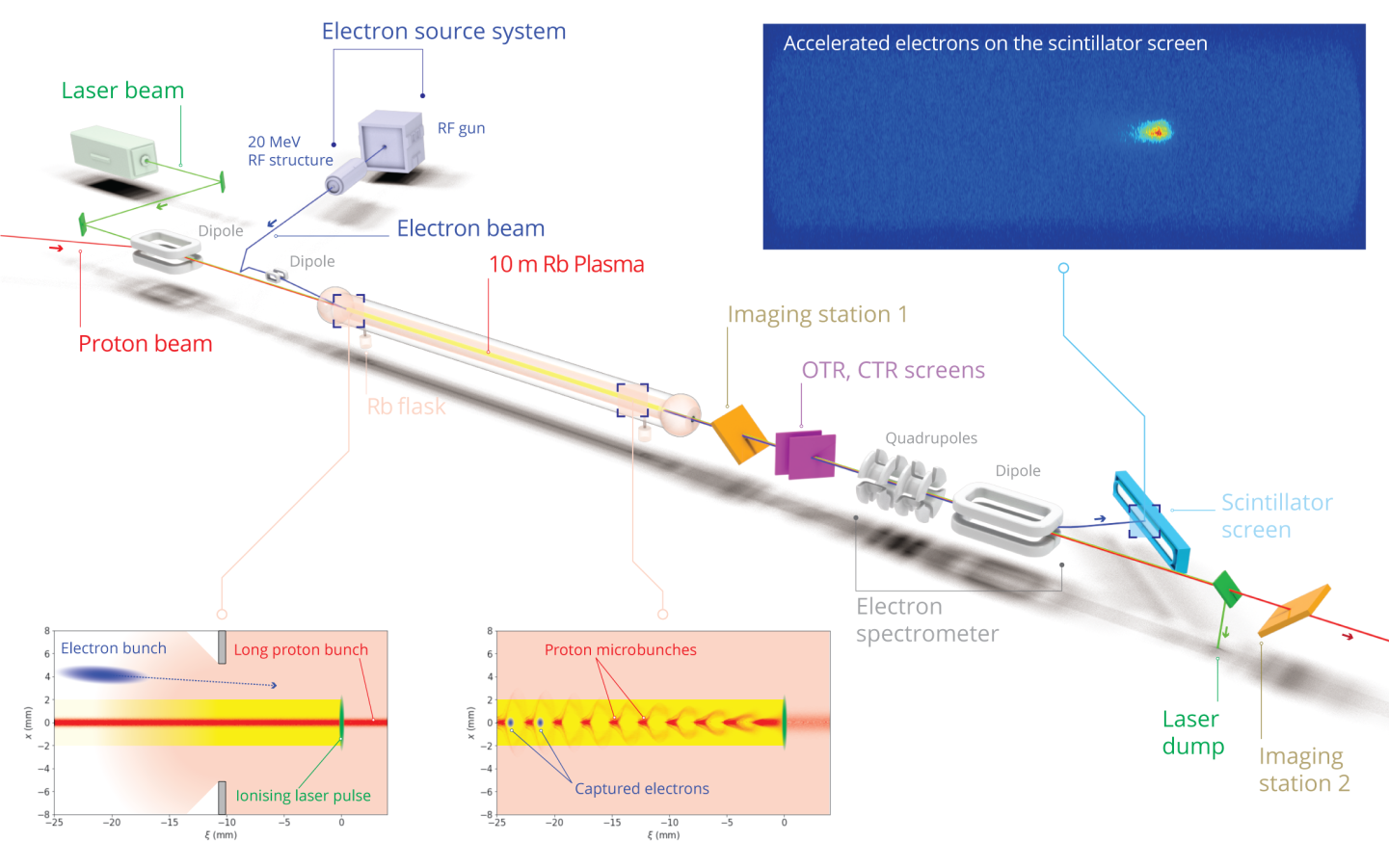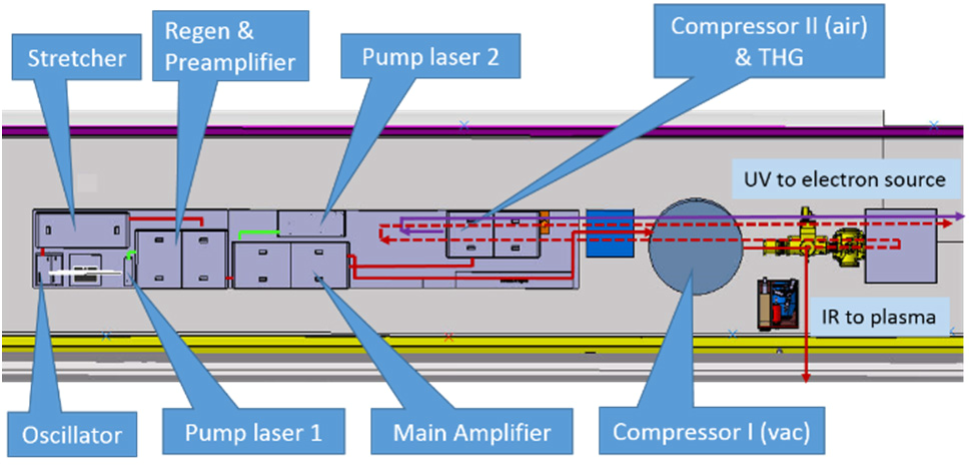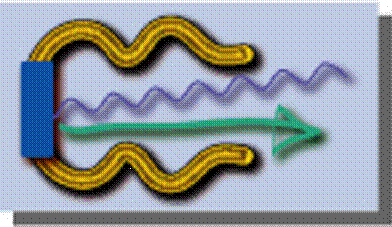Laser Infrastructure: AWAKE
The Advanced Proton Driven Plasma Wakefield Acceleration Experiment (AWAKE) Run-1 aimed at studying plasma wakefield generation and electron acceleration driven by proton bunches. A 400 GeV proton beam is extracted from the CERN Super Proton Synchrotron, SPS, and utilized as a drive beam for wakefields in plasma to accelerate electrons from 19 MeV energy up to 2 GeV. A plasma is generated in a 10 m long rubidium vapor source via the over-the-barrier ionization by high intensity laser field. The short laser pulse propagating co-axially with the proton beam seeds a self-modulation process within the proton bunch on the front of plasma creation. Thus, the long SPS proton bunch (rmsd=12 cm) is transformed into a train of micro-bunches driving the periodic wakefield. A comprehensive schematic of the AWAKE Run-1 is shown in Fig. 1, while the details of the experiment can be found in this Nature publication.

Run-1 of the AWAKE experiment utilized a two-fold laser system:
1) A primary 450 mJ 100 fs IR laser for ionization front seeding of self-modulation process of the proton bunch inside Rb plasma.
2) A secondary sub-mJ level picosecond UV laser for photoemission from a Cs-Te photocathode.
The laser system CENTAURUS supplied by Amplitude Technology comprises a mode-locked fibre laser oscillator, pulsestretcher, a series or Ti:Sapphire amplifiers associated with Nd:YAG pumping lasers and two pulse compressors as shown on Fig. 2. The output of the main amplifier consists of two IR laser beams with central wavelength of 780 nm. The main (primary) beam is injected into vacuum system where pulses with energy up to 660 mJ are compressed to 120 fs and transported further (450 mJ maximum) to the rubidium vapour source for producing the plasma. The secondary IR beam with 2 mJ pulses at the repetition rate of 10 Hz is perfectly synchronized with pulses of the main laser beam since it originates from the same oscillator.

The secondary beam was used to produce pulsed UV light required to generate electron bunches in the AWAKE experiment. It was produced by third harmonic generation (THG) of the compressed IR pulse using the THG Extended Femtokit FKE-800-100-10M from EKSMA Optics. Some details of the laser design can be found in this conference proceeding.
Currently AWAKE is under the study phase for Run-2 whose general goals can be found here. The LP section is responsible for laser system design, installation, transport, diagnostics, and maintenance and photocathode support, the details of which will be updated on this page when applicable.
